Central Park is a beautiful green oasis in the heart of bustling New York City, offering a peaceful escape from the urban noise and chaos. This 843-acre park is not only a favorite spot for city dwellers and tourists but also home to an impressive variety of bird species.
From migratory birds flying over the park during the spring and fall to resident birds that have made Central Park their permanent home, bird watching in Central Park is an exquisite experience that offers you the opportunity to observe fascinating avian behaviors and the beauty of mother nature.
In this article, we will explore the treetops and the beautiful lakes of Central Park to discover some of the most commonly seen bird species in this captivating urban park.
1. American Goldfinch
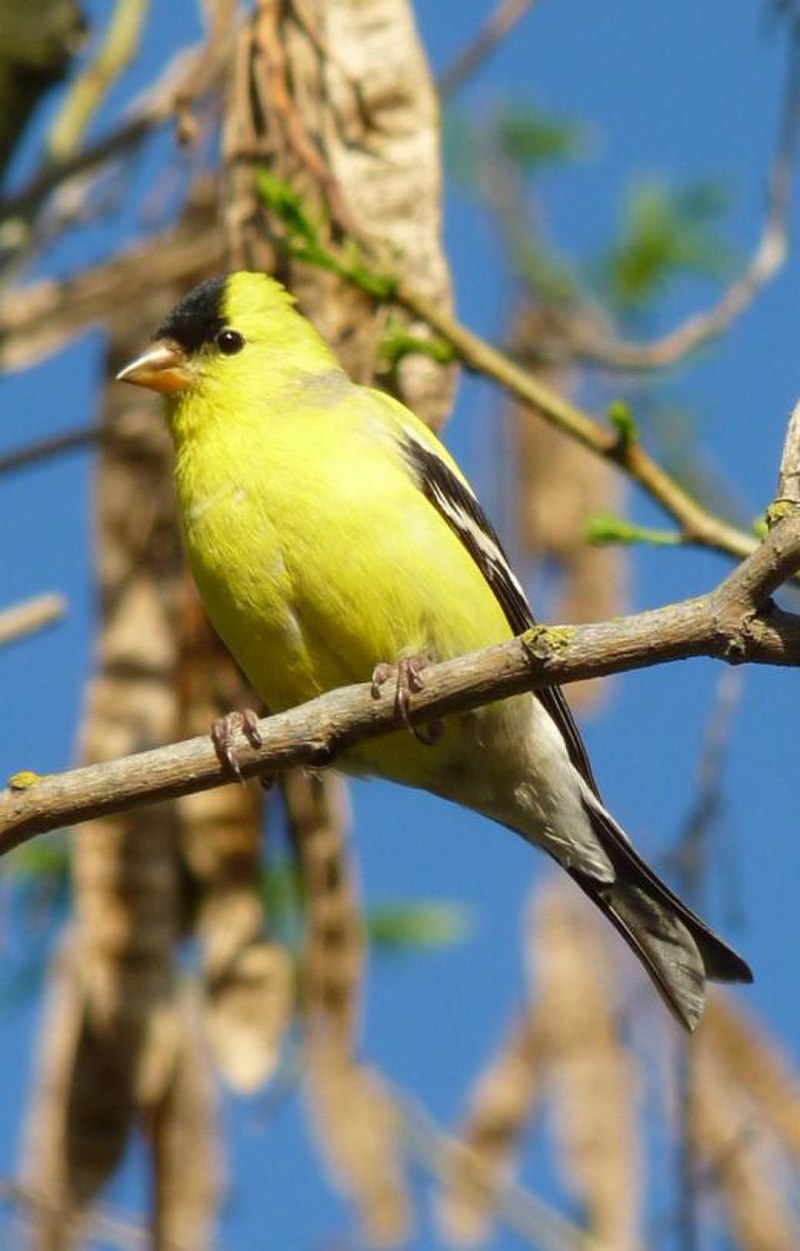
The American goldfinch is a small North American bird in the finch family. Males are vibrant yellow with black wings and tail, while females are duller in colouration.
It migrates from mid-Alberta to North Carolina during breeding season, south of Canada–United States border to Mexico for its wintering grounds.
The only finch which undergoes complete molt every year, it displays sexual dichromatism where males have brighter colours than their female counterparts.
They feed mainly on seeds but also eat insects such as aphids and caterpillars when raising youngs; they often occur near thistles or other plants that produce viable seed heads.
Their call consists of an array of chirps and trills making them quite conspicuous.Scientific classification:
| Kingdom | Animalia |
| Phylum | Chordata |
| Class | Aves |
| Order | Passeriformes |
| Family | Fringillidae |
| Subfamily | Carduelinae |
| Genus | Spinus |
| Species | S. tristis |
Also Featured In: Most Common United States Birds, Most Common Winter Birds
2. Red-Bellied Woodpecker
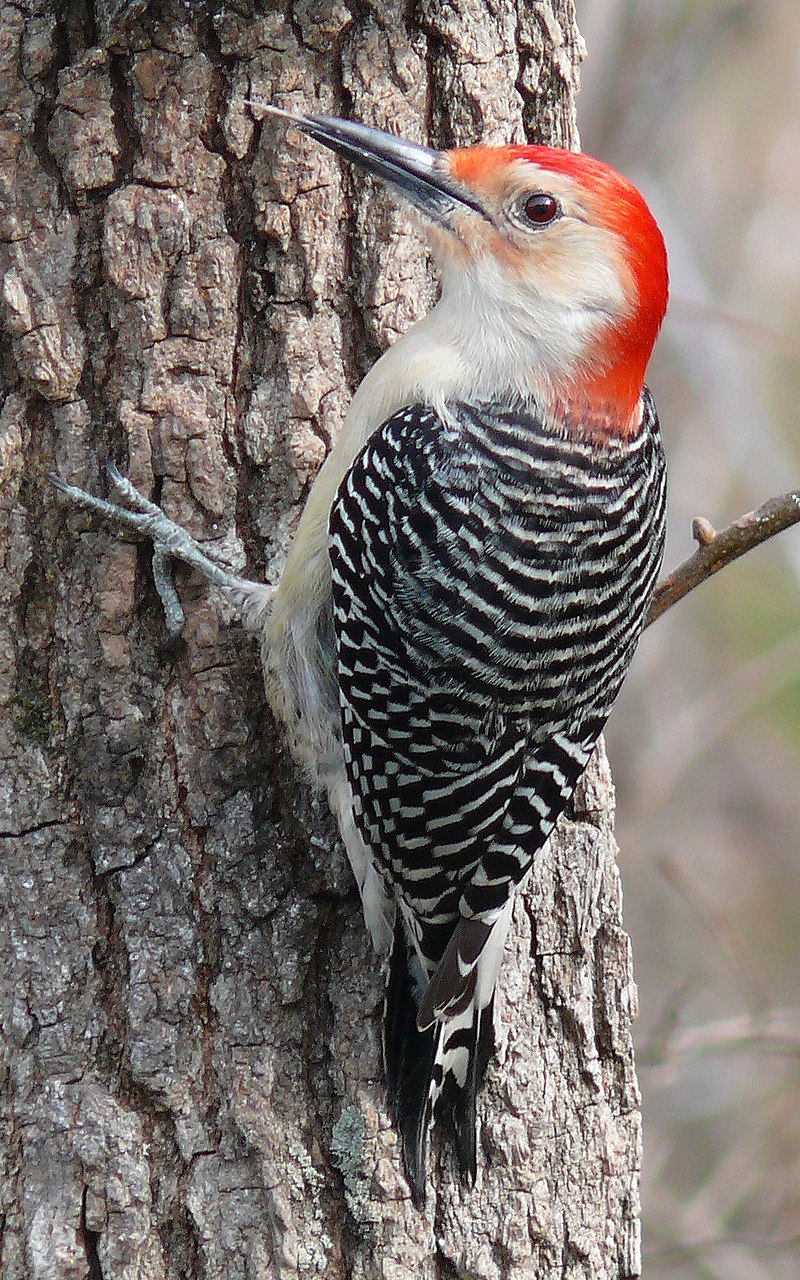
The Red-bellied woodpecker is a beautiful bird with an orange-red crown and nape. It breeds mainly in the eastern United States, ranging from Florida to Canada.
This medium-sized woodpecker of the family Picidae has black wings, white stripes on its back and tail feathers that are barred with black.
Its underside is mostly pale yellow or white but it also features some red coloration around its neck area.
Despite this subtle red hue, it should not be mistaken for the entirely red head and neck belonging to the Red-headed woodpecker of the same genus Melanerpes carolinus.
The Red bellied Woodpeckers diet consists primarily of insects such as ants, beetles and grasshoppers along with nuts fruits berries and tree sap which they will feed upon during different times throughout their life cycle.Scientific classification:
| Kingdom | Animalia |
| Phylum | Chordata |
| Class | Aves |
| Order | Piciformes |
| Family | Picidae |
| Genus | Melanerpes |
| Species | M. carolinus |
Also Featured In: Birds Commonly Found in New York, Birds Live in Arkansas
3. Common Grackle

The Common Grackle is a large icterid bird commonly found in North America. It has an iridescent head and pale yellow eyes, which are framed by its long dark bill and long tail.
Males typically have more vivid colors on their heads than females do. These birds can be seen across much of the continent, in fields, forests, wetlands – even urban areas.
They form huge flocks to search for food such as grains or insects that they catch with their bills.
The grackles may also scavenge from human sources like garbage dumps or picnic tables if available. With its colorful plumage and distinct call it’s easy to spot this species amongst other birds.Scientific classification:
| Kingdom | Animalia |
| Phylum | Chordata |
| Class | Aves |
| Order | Passeriformes |
| Family | Icteridae |
| Genus | Quiscalus |
| Species | Q. quiscula |
Also Featured In: Most Popular Bird Species in North America, Flocks Birds around Us
4. Pied-Billed Grebe
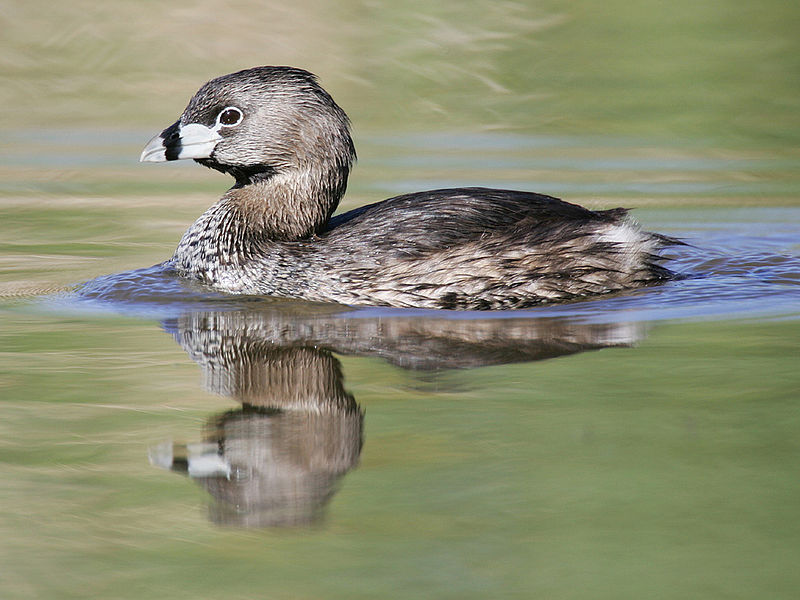
The Pied-billed Grebe is a water bird found in ponds throughout the Americas. It has earned many nicknames, including American dabchick, rail, and Carolina grebe.
This species of grebe can be recognized by its distinctive bill which is pied or mottled with black and white markings.
Its brownish body is also covered in dark spots as well as having long legs for swimming underwater to catch food such as aquatic insects and crustaceans.
The Pied-billed Grebes are monogamous birds that pair up during breeding season from spring to summer where they build their nests together on vegetation near the shoreline of lakes or slow moving rivers.
These birds are solitary outside of mating season but will form small flocks when migrating south for winter months.Scientific classification:
| Kingdom | Animalia |
| Phylum | Chordata |
| Class | Aves |
| Order | Podicipediformes |
| Family | Podicipedidae |
| Genus | Podilymbus |
| Species | P. podiceps |
Also Featured In: Top Birds Found in Mexico, Most Common Lake Birds
5. Spotted Sandpiper
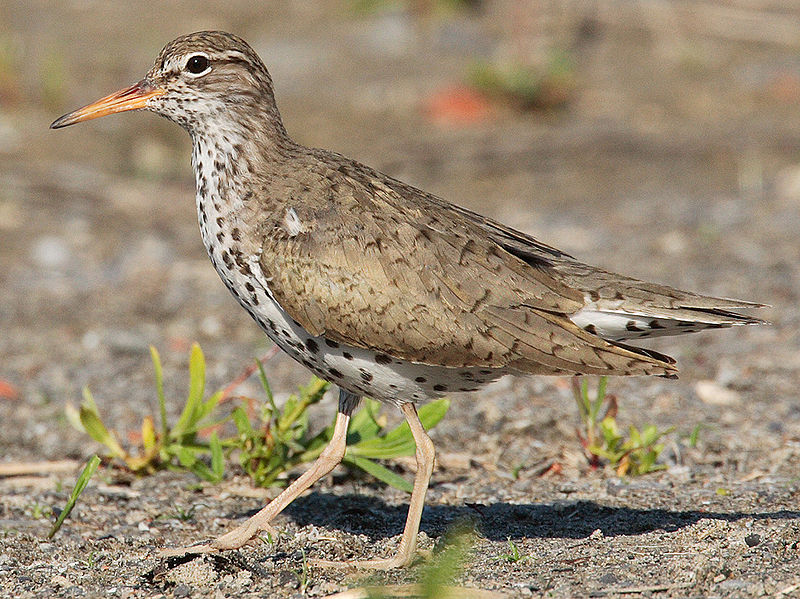
The Spotted sandpiper (Actitis macularius) is a small shorebird that can be found across North America and parts of South America.
It has an appealing spotted plumage, predominately brown in colour with white spots on the wings, tail feathers, head and neck.
The Common Sandpiper (A. hypoleucos) is its sister species which takes over geographically when the other moves away; they have been known to hybridize as well when strays settle down among breeders.
This bird was first described by Carl Linnaeus in 1766 in his twelfth edition of Systema Naturae as a migratory summer visitor to Europe but it now also occupies many habitats too like beaches, riversides and even grasslands during migration periods or for breeding season itself.
Its diet consists mainly of insects such as air-borne flies plus molluscs from shallow water areas – this makes them quite unique amongst waders.Scientific classification:
| Kingdom | Animalia |
| Phylum | Chordata |
| Class | Aves |
| Order | Charadriiformes |
| Family | Scolopacidae |
| Genus | Actitis |
| Species | A. macularius |
Also Featured In: Suriname birds, Birds that Live in Mississippi
6. Yellow-Crowned Night Heron
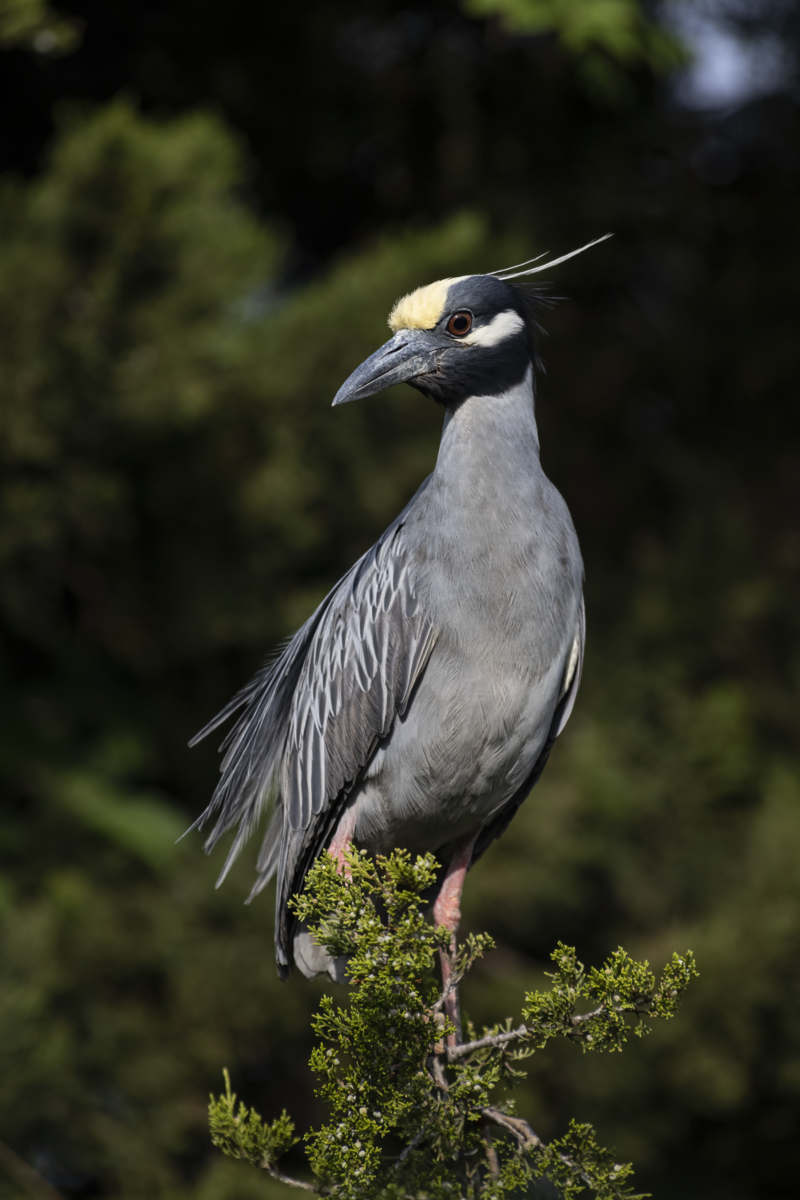
The Yellow-crowned night heron is a beautiful and unique species of bird native to the Americas. It has distinctive yellow crowns on its head, making it easy to identify among other herons.
These birds are also larger than most other types of herons, reaching up to 70 cm in length and 850 g in weight.
They usually feed on small fish or crustaceans while wading through shallow waters with their long legs.
The yellow-crowned night heron can be found near marshes or lakes during breeding season when they will build nests made from twigs high above the ground for protection against predators like raccoons and foxes.
This majestic bird is an important part of wetland ecosystems as it helps keep populations of smaller aquatic animals balanced by preying upon them.Scientific classification:
| Kingdom | Animalia |
| Phylum | Chordata |
| Class | Aves |
| Order | Pelecaniformes |
| Family | Ardeidae |
| Genus | Nyctanassa |
| Species | N. violacea |
Also Featured In: Bermuda birds, Flight Birds You Should Know
7. Wood Duck
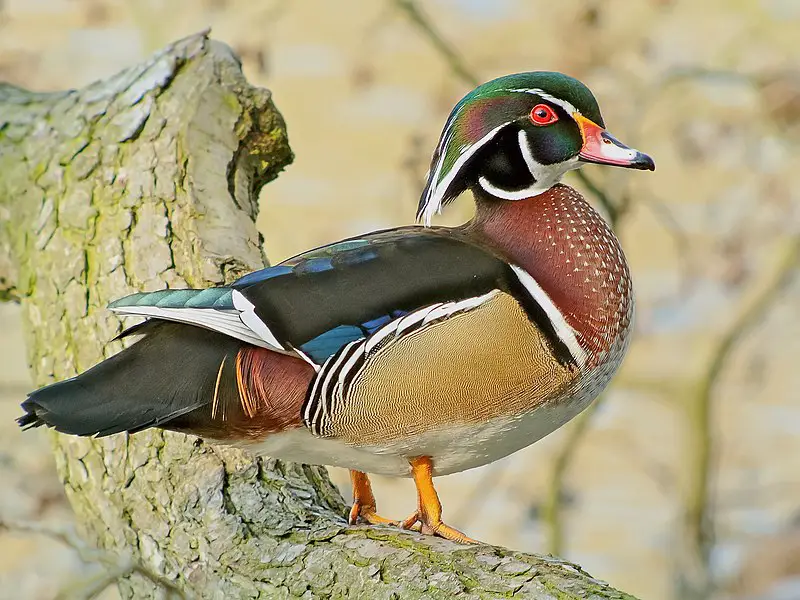
The wood duck, also known as the Carolina Duck, is a species of perching duck native to North America. It is renowned for its beautiful plumage and vibrant colors.
On average, an adult wood duck stands at 19-21 inches in length with a wingspan ranging from 26 to 29 inches. Its weight typically falls between 454–800 grams depending on gender and seasonality.
This medium-sized bird can be seen swimming or perched atop branches near bodies of water like lakes, ponds and rivers – where it feeds mostly on aquatic plants and insects.
The female builds nests inside cavities in trees close to these waters while the male protects her eggs during incubation period until they hatch into adorable little chicks.
Wood ducks are beloved by many due their stunning looks which make them popular subjects among photographers too.Scientific classification:
| Kingdom | Animalia |
| Phylum | Chordata |
| Class | Aves |
| Order | Anseriformes |
| Family | Anatidae |
| Genus | Aix |
| Species | A. sponsa |
Also Featured In: birds of New Mexico, Water Birds Live around Us
8. Virginia Rail
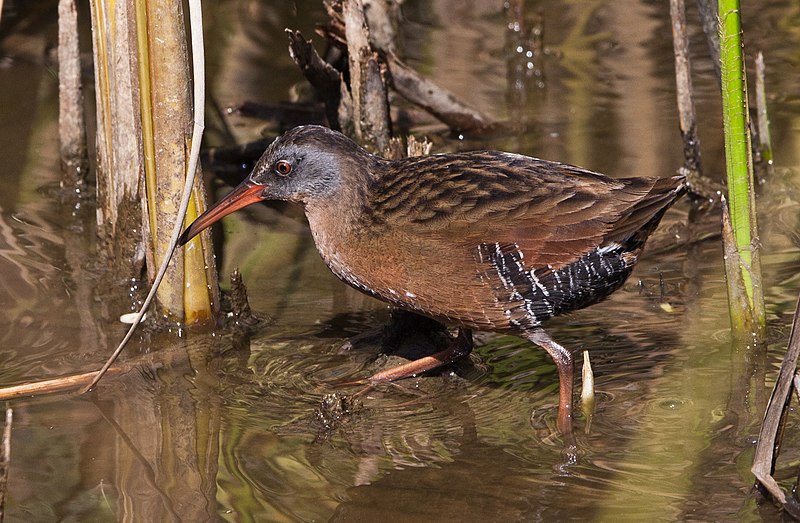
The Virginia Rail is a small waterbird which belongs to the Rallidae family. It remains fairly common in spite of habitat loss, but it’s difficult to spot since they tend to be quite secretive and their calls can often be heard more than them being seen.
They are also sometimes hunted for sport, however this does not happen very often. The Ecuadorian rail is considered by some authorities as its own species separate from the Virginia Rail, although others classify it as a subspecies.
These birds have dull coloured plumage with brownish-grey upperparts and whitish underparts; males have a reddish throat patch during breeding season while females do not possess one at all times.Scientific classification:
| Kingdom | Animalia |
| Phylum | Chordata |
| Class | Aves |
| Order | Gruiformes |
| Family | Rallidae |
| Genus | Rallus |
| Species | R. limicola |
Also Featured In: birds of Virginia, Wetlands Birds You Should Know
9. Mourning Warbler
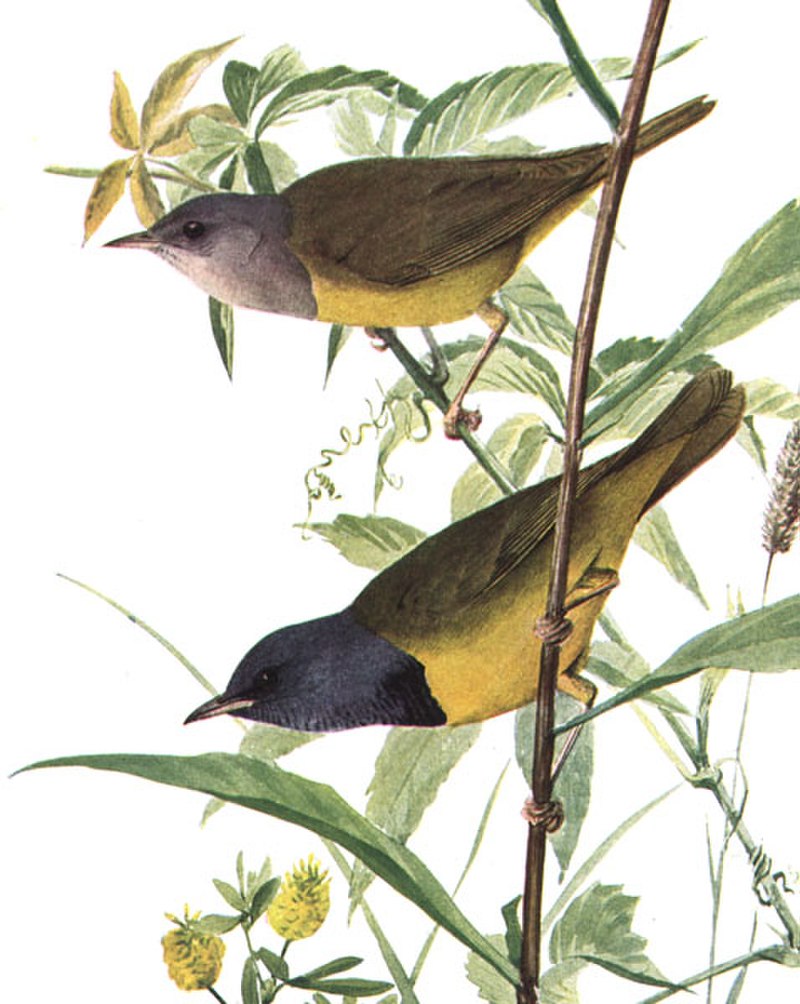
The Mourning Warbler is a small songbird that belongs to the New World warbler family.
Originating in eastern and central North America, as well as some Central American countries, these birds migrate with the seasons and prefer dense second growth forests.
They are easily identified by their bright yellow-green plumage which has a distinct black mask extending from its beak down to its neck, giving it an almost melancholic look – hence the name ‘Mourning’ Warbler.
This species of bird loves singing and can often be heard chirping away during mating season or just mid flight.
With large eyes surrounded by white spectacles they also have strong legs allowing them to perch on trees for long periods at time while hunting insects among leaves and branches.Scientific classification:
| Kingdom | Animalia |
| Phylum | Chordata |
| Class | Aves |
| Order | Passeriformes |
| Family | Parulidae |
| Genus | Geothlypis |
| Species | G. philadelphia |
Also Featured In: birds of Michigan, Common Birds in Saskatchewan
10. Ring-Necked Duck
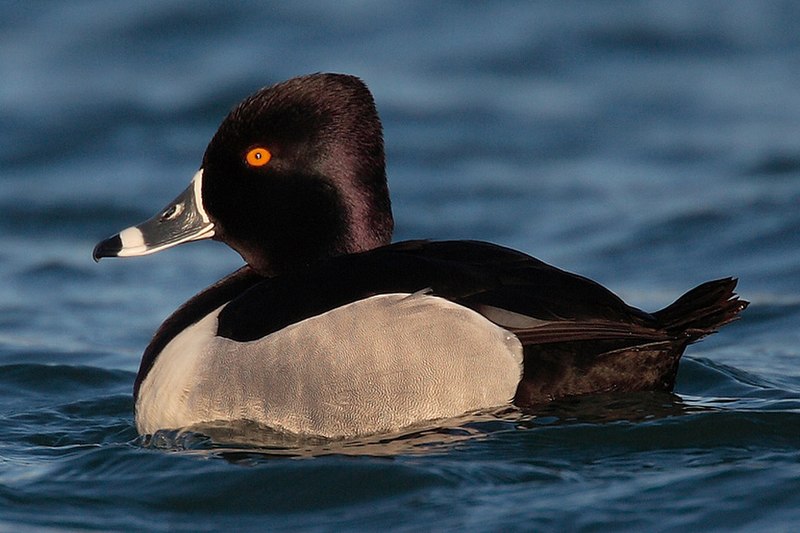
The Ring-necked duck is a popular diving bird found in freshwater ponds and lakes across North America.
They are known for their relatively small to medium size and distinctive ring around their neck, which gives them their name.
Interestingly, their scientific name is derived from a Greek word for an unidentified seabird and the Latin word for “neck.”
These ducks are great swimmers and divers, spending much of their time underwater searching for food, which mostly consists of aquatic vegetation and invertebrates.
They are also known for their striking appearance, with a beautiful coloring of black, gray, and white feathers.
The Ring-necked duck is a fascinating bird, and its unique characteristics make it a subject of interest for bird watchers and wildlife enthusiasts alike.Scientific classification:
| Kingdom | Animalia |
| Phylum | Chordata |
| Class | Aves |
| Order | Anseriformes |
| Family | Anatidae |
| Genus | Aythya |
| Species | A. collaris |
Also Featured In: Phoenix Birds You Should Know, Common Cornwall Birds
11. Red-Necked Grebe
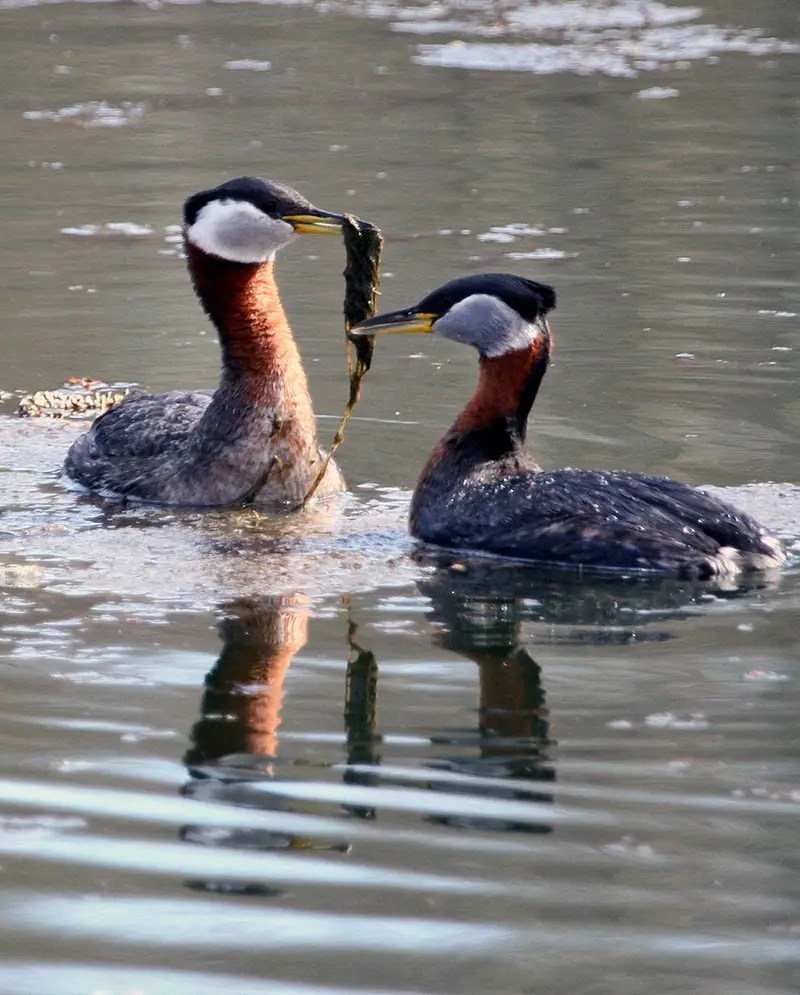
Red-necked grebe, also known as Podiceps grisegena, is a migratory aquatic bird that can be found in the temperate regions of the northern hemisphere.
During the winter, they prefer calm waters beyond the waves near ocean coasts or large lakes.
In terms of breeding, these birds breed in shallow bodies of fresh water like lakes, marshes, or fish-ponds.
They are not dependent on specific habitats but seem to prefer areas that provide them with enough food supplies.
These birds are known for their unique red neck and prefer to swim underwater when threatened.
Overall, the Red-necked Grebe is an interesting and unusual bird with distinct physical characteristics and behaviors.Scientific classification:
| Kingdom | Animalia |
| Phylum | Chordata |
| Class | Aves |
| Order | Podicipediformes |
| Family | Podicipedidae |
| Genus | Podiceps |
| Species | P. grisegena |
Also Featured In: Native Birds of Kazakhstan, Common Estonian Birds
12. Solitary Sandpiper
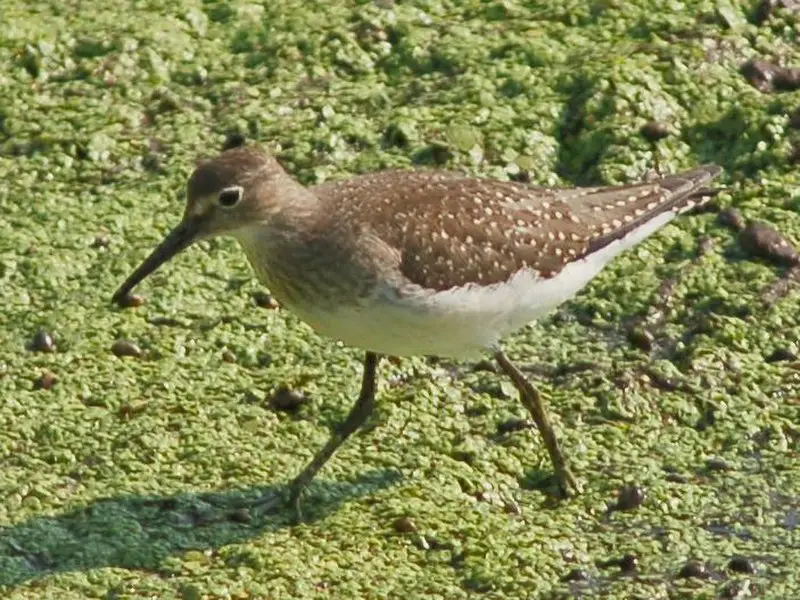
The Solitary sandpiper is a small shorebird that belongs to the Tringa genus. Its scientific name is Tringa solitaria, which means “solitary” in Latin. It measures 18-23 cm in length and has a distinct white-rumped tail.
The name Tringa comes from Ancient Greek trungas, which refers to a thrush-sized wading bird.
The Solitary sandpiper is named so because it is often found alone. It is a migratory bird that breeds in North America and winters in South America.
Its diet consists of insects, crustaceans, and small fish, which it picks up using its long, thin bill. Despite its name, this bird is not entirely solitary and has been known to feed and roost with other shorebirds.
The Solitary sandpiper is a unique and fascinating species that can be found in wetland habitats across North and South America.Scientific classification:
| Kingdom | Animalia |
| Phylum | Chordata |
| Class | Aves |
| Order | Charadriiformes |
| Family | Scolopacidae |
| Genus | Tringa |
| Species | T. solitaria |
Also Featured In: Birds that Migrate through Illinois in the Spring, Birds in Calgary You’ll Love to See